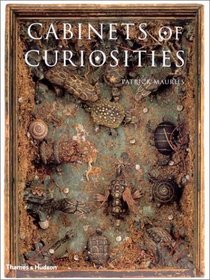Search -
Cabinets of Curiosities
Cabinets of Curiosities
Author:
The cabinet of curiosities, that strange assemblage of marvels from the natural world with virtuoso man-made objects, seemed definitively consigned to realms where only scholars venture. Its 300-year history apparently came to an end with the eccentric collectors of the baroque age, when scientific thinking and rationalism took over. But in rece... more »
Author:
The cabinet of curiosities, that strange assemblage of marvels from the natural world with virtuoso man-made objects, seemed definitively consigned to realms where only scholars venture. Its 300-year history apparently came to an end with the eccentric collectors of the baroque age, when scientific thinking and rationalism took over. But in rece... more »
ISBN-13: 9780500510919
ISBN-10: 0500510911
Publication Date: 11/2002
Pages: 256
Rating: ?
ISBN-10: 0500510911
Publication Date: 11/2002
Pages: 256
Rating: ?
0 stars, based on 0 rating
Genres:




